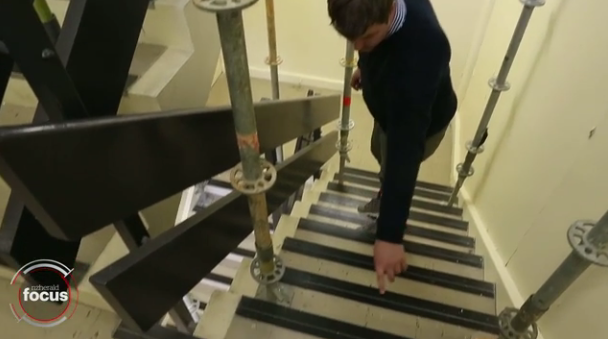“The whole is greater than the sum of its parts! Or, is it?!†proclaimed no one in the furore which surrounded Wellington’s rapid reopening after the 7.8 Kaikoura quake. Well. I think someone should have.
With the dust firmly settled – at least for now – from last month’s earthquake, it is timely to note how this most fabled designer’s maxim extends far past the aesthetic. In fact, it is fundamental to our understanding of the deep-seated dispute between red-zoners and business-as-usualers.

Following the Kaikoura earthquake, strong arguments for and against the protracted closure of Wellington CBD were made clear. (See Kathryn Ryan’s roasting of the supposedly rash Justin Lester, and Leviathan’s unequivocal Eye of The Fish article “NO Red Zoneâ€).
Both points are unarguably strong: on the one hand, what is more valuable than a human life? Surely, we must take all precautions in safeguarding that most precious thing (Red Zone!). On the other hand, such an inhibited way of life is simply unacceptable, in our modern, urbanised age (Business as Usual!).
The fact is, the strength of both arguments show we have reached a classic whole-versus-individual impasse. Neither argument can overcome the other outright. Is the whole (i.e our common, urban-centric livelihoods) of greater value than its parts (i.e. some loss of life)? We can not say. All we can do is discuss how we proceed in such a bind, and recognise who might be the winners and who might be the losers. Our response needs to reflect that, by treating those concerned fairly.
Clearly, business owners and landlords stand on the side of business-as-usual. A closing down of the CBD to save the lives of some would see their businesses and income streams collapse, as well as our collective, prosperous way of life (John Stuart Mill would be turning in his grave if we elevated the interests of the few over the utilitarian, moral prerogative of the many! Wouldn’t he? Yes, I think so).
Tenants and workers might find themselves leaning toward a more red argument. At the behest of their employment and occupancy contracts, they could find themselves forced into a potentially perilous environment that could kill them. (Are your deontological bells not tolling at full force, like those at Konigsberg Cathedral, at the thought of such grave injustice? Well, they ought.)
Let us weigh up our actual response, that is the Rapid Assessment. How did it treat the balance between the whole and the individual? In striking a balance, were those affected treated fairly?
At first glance: Well done to our process of Rapid Assessments. We prioritised getting things back up and running for businesses and the public, but compensated for occupants by checking things were safe. Nice.
But, sadly, cracks in the process have let our workers and tenants down. Rapid Assessment reports issued by consulting engineer firms are being conveyed to businesses and landlords only. They are not being published transparently to the occupants. Workers and tenants have to rely on the good faith of their landlord (who is extremely worried about keeping their income/rent coming, in balance of the risk of potential legal culpability for their tenants’ safety) that their building is completely safe to occupy.

A resident in Tennyson Street drew attention to this plight with his “self-evacuationâ€. Relying solely on a laconic landlord for knowledge of his safety, the resident understandably felt he had no choice but to leave his visibly damaged rented accommodation.
This illustrates something important. Following major events like natural disaster, there will be a number of valid paths forward for ourselves and our cities. We need to respect each others’ views, proceed in a determined fashion, but crucially, ensure that those affected are treated fairly.




Congratulations Dedalus – a new writer for the Eye of the Fish – on your first post. May it be the first of many.
Thanks, Levi.
And a timely article too, given this recent news:
http://www.nzherald.co.nz/earthquakes/news/article.cfm?c_id=184&objectid=11761992
“Nearly 17ha of Wellington CBD office floor space spread across 16 separate buildings is now closed to 50 tenants after last month’s earthquake, experts says.
Zoltan Moricz, CBRE’s New Zealand head of research, and Richard Carr, its research analyst, have released a detailed report showing the scope of the damage and a list of the 16 buildings hit by the Kaikoura quake.
“While the precise scope of damages and their ongoing effects are still being assessed, currently it is believed that 16 buildings comprising 11 per cent or 167,300sq m of Wellington CBD’s total office building stock, have been closed to occupiers – 47 percent of this space is classified by CBRE as prime quality stock,” the report said.
And from the idealogicians:
http://www.stuff.co.nz/business/87295032/stephen-franks-will-wellington-regional-council-go-down-with-harbour-quay
It’s often hard to place Centreport (and its direct precursors) on this spectrum. On the one hand – developers of public land (or a semi-liquid version of it) for the common benefit; attractors of opprobrium from Franks and co. On the other – privatisers of public space and, I suspect, shedders of crocodile tears over Shed 35.